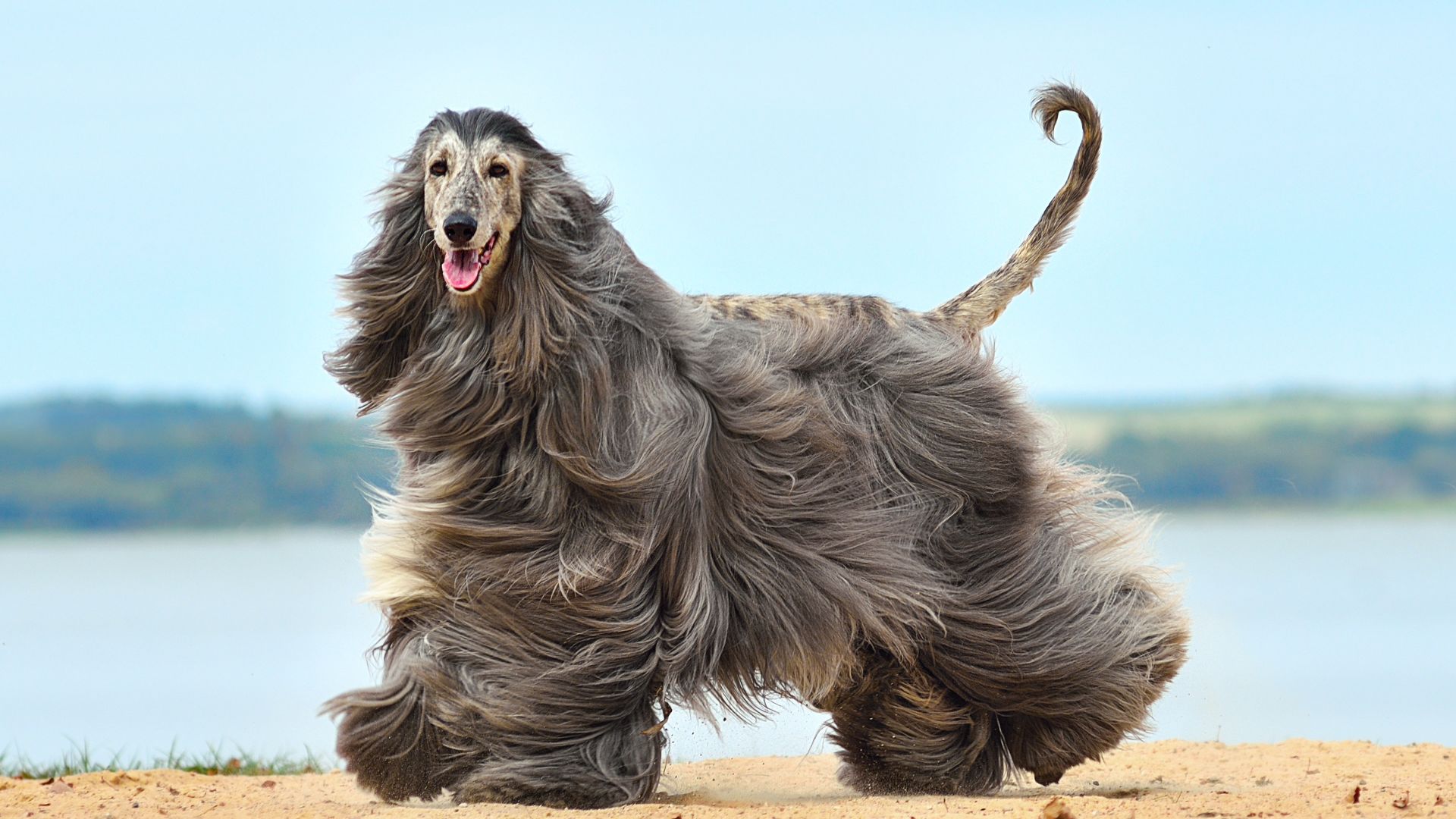Dogs have been by our side for millennia, but not all breeds have changed with time. While selective breeding has transformed many dogs into modern versions of their ancient selves, a handful remain nearly untouched, both in appearance and behavior. These are the living relics of the canine world, breeds that look, think, and move much like their ancestors did centuries, or even millennia, ago.
Scientific studies, including DNA sequencing from the Canine Genome Project and recent publications in Nature and Science, have helped identify these resilient lineages. Though exact timelines vary, some dogs were likely domesticated 14,000 to 40,000 years ago; these breeds have maintained their original form for roughly a thousand years or more, thanks to their strong working instincts, cultural significance, or isolation from outside breeding.
What you’ll learn in this article:
Dog breeds with little to no genetic or physical change in 1,000+ years
Fascinating origin stories backed by archaeological and genomic evidence
Why these dogs were “perfect” from the beginning, and still are today
Ready to meet the time travelers of the dog world? Let’s take a step back in history and learn about our favorite ancient dog breeds.
Dog Breeds That Barely Changed In 1000 Years
1. Saluki
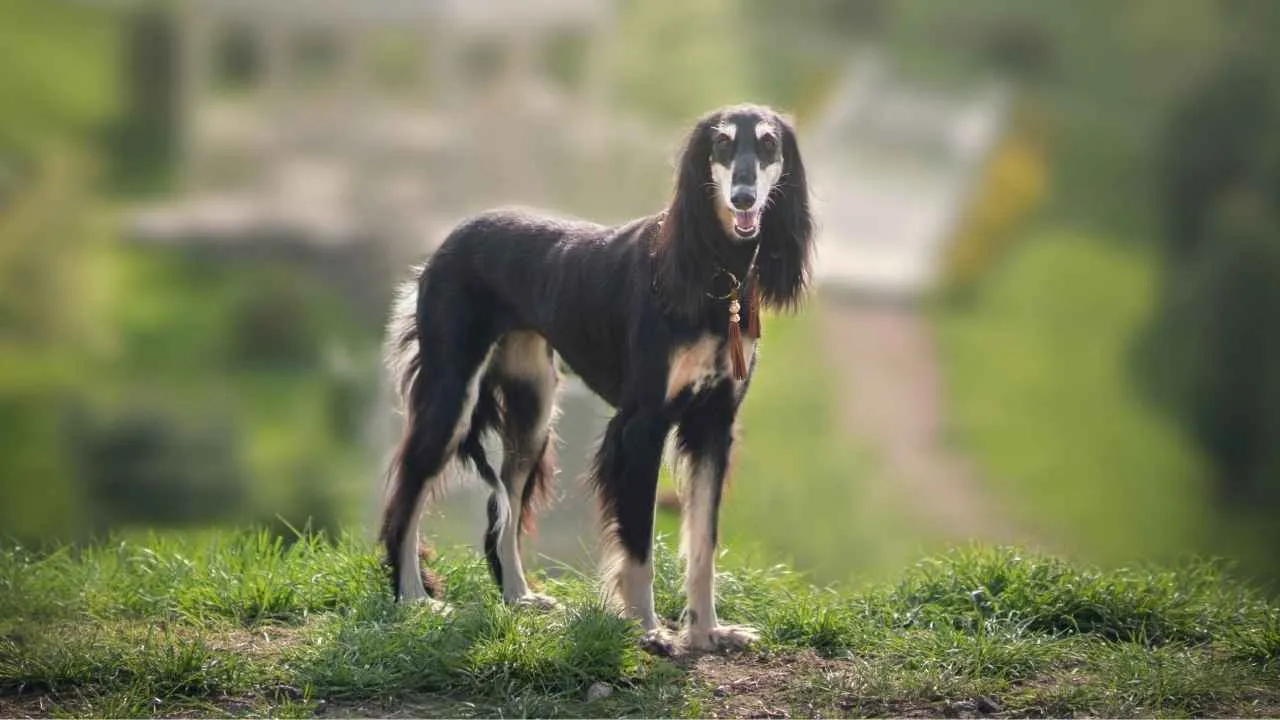
The Saluki is widely recognized as one of the oldest dog breeds in existence, with roots tracing back over 5,000 years to the Middle East. Archaeological evidence, including ancient Egyptian tomb art and Sumerian carvings, depicts dogs resembling the Saluki alongside humans, often in noble or religious contexts.
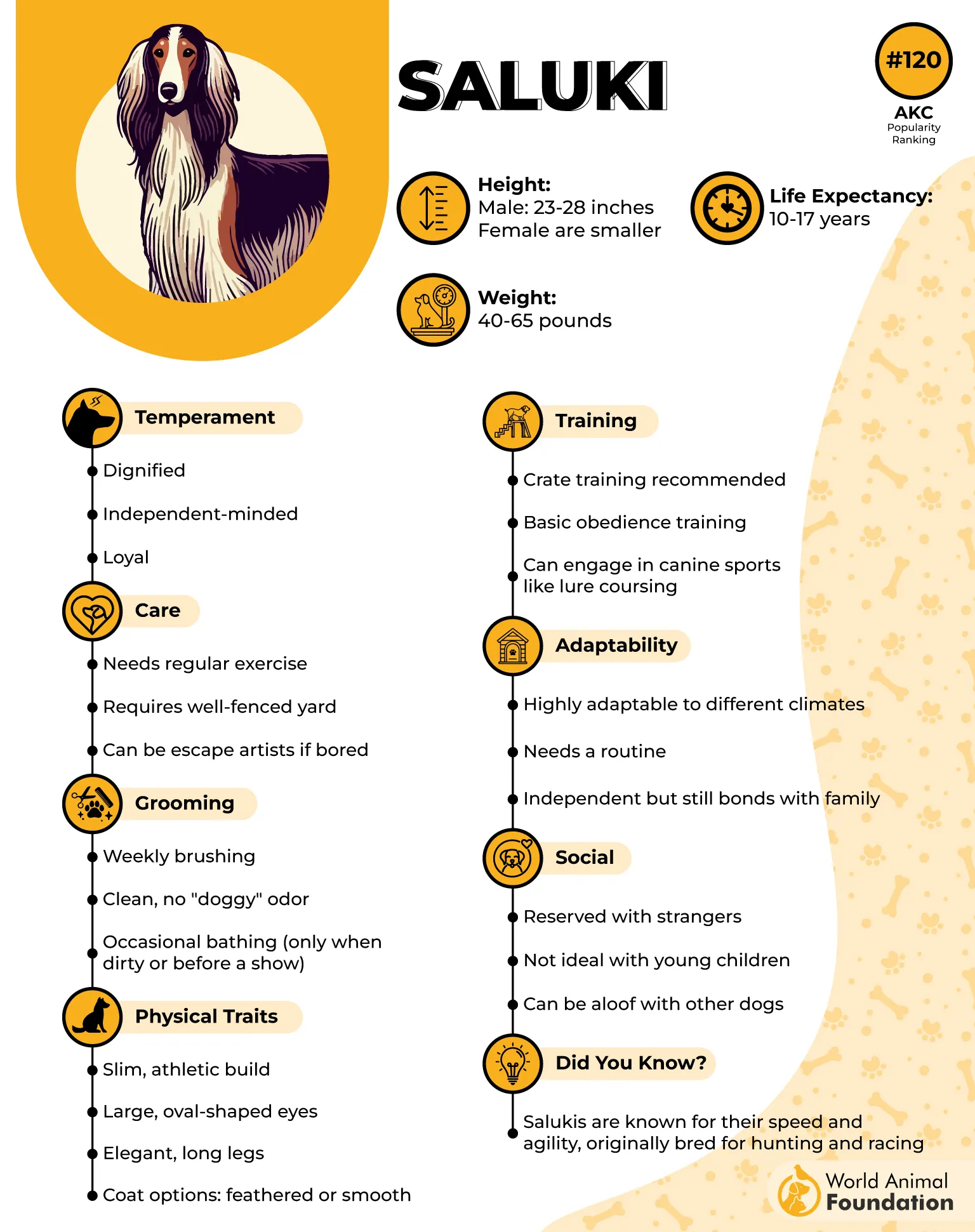
These elegant hounds were bred for speed and stamina. Their lean frames, long legs, and silky feathered ears made them ideal for chasing down game like gazelles across harsh desert terrain. Nomadic tribes and royalty alike relied on them for hunting and companionship.
Despite their athleticism, Salukis are surprisingly calm indoors. They form deep attachments to their families but remain reserved with strangers. They’re also escape artists, so secure fencing is essential for outdoor time.
While not overly demonstrative, Salukis are sensitive and perceptive. They prefer quiet homes where they can stretch out after a long run, ideally somewhere soft and elevated. Physical and emotional space matter to this independent but loyal breed.
Breed Highlights
Origin: Middle East, ~6000–7000 BCE
Original role: Sighthound used for hunting fast prey
Distinctive traits: Silent, independent, built for speed
2. Basenji
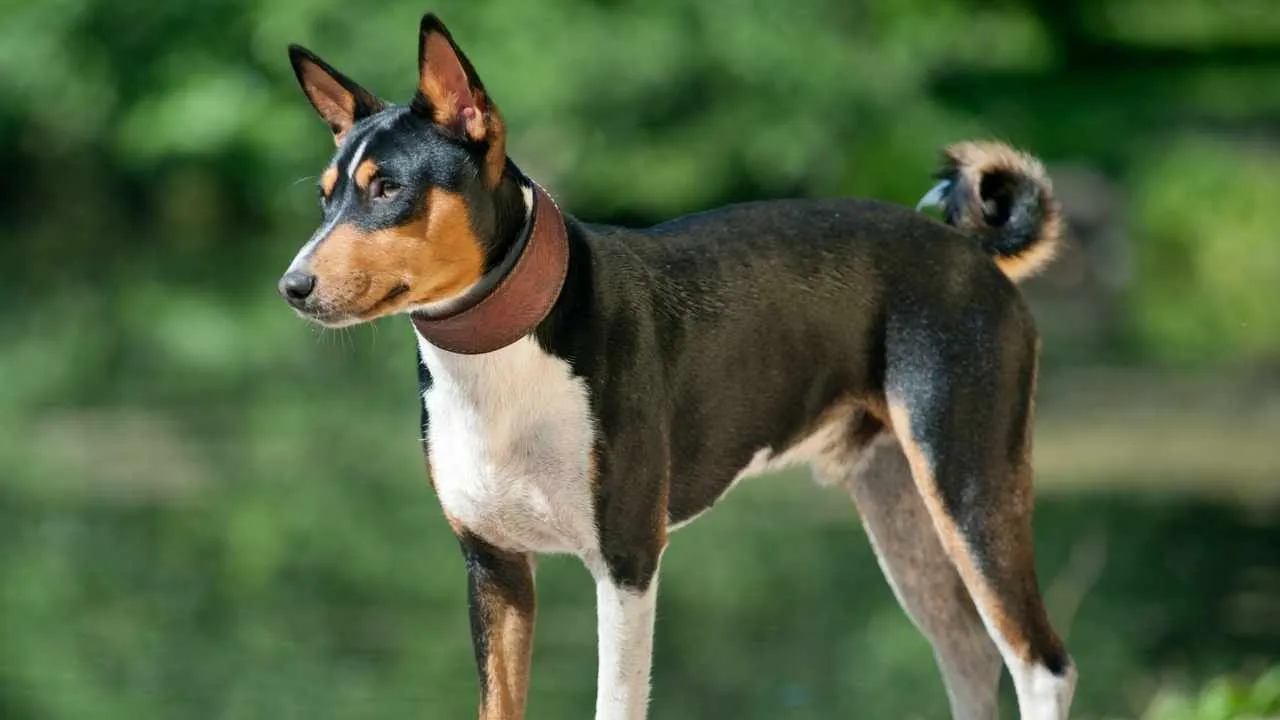
The Basenji hails from Central Africa and is often referred to as the “barkless dog.” Cave paintings in Libya and Egyptian tomb illustrations show similar dogs dating back to around 6000 BCE, where they were used for hunting and pest control.
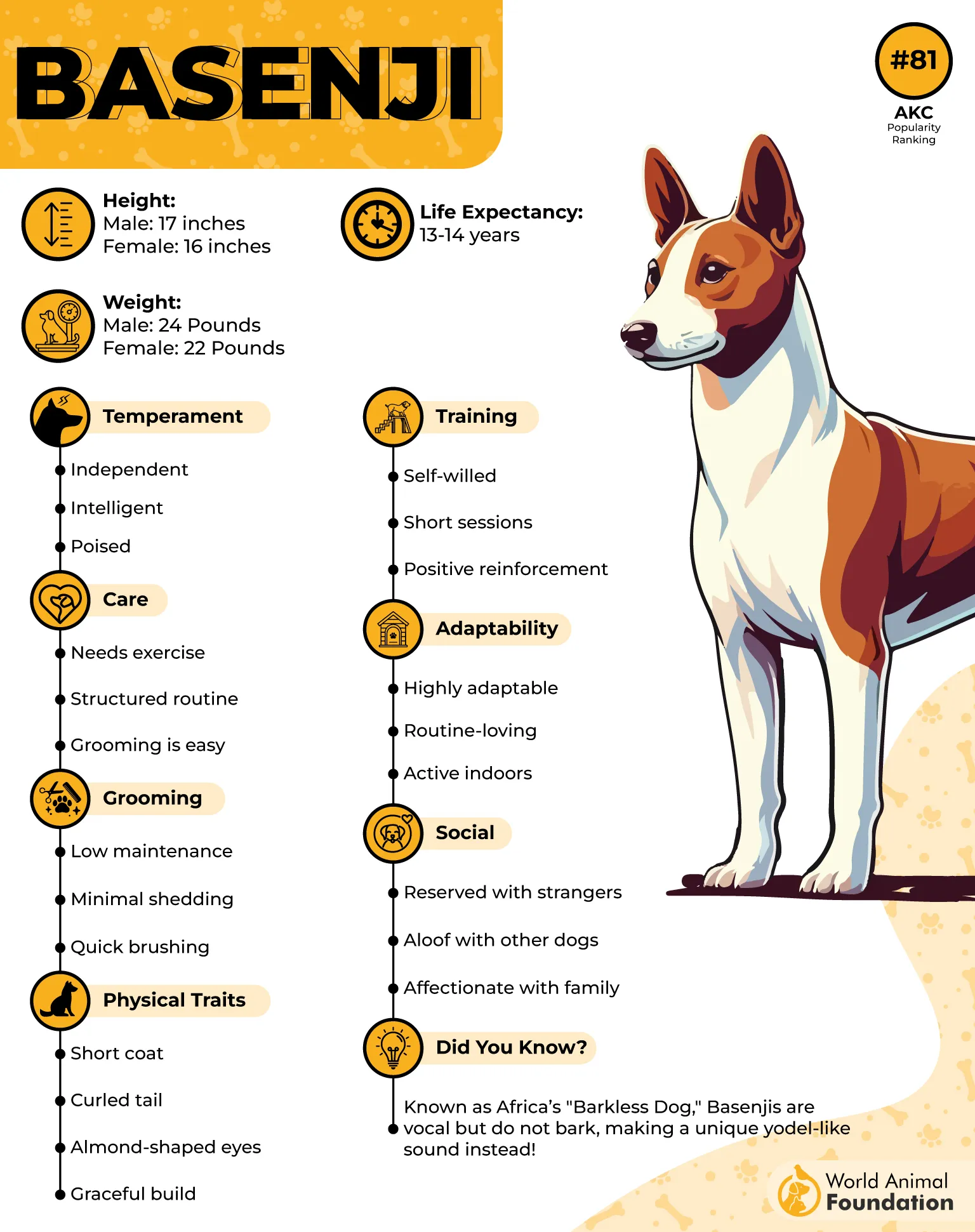
Rather than barking, Basenjis emit a unique vocalization known as a yodel. Their small, muscular bodies, tightly curled tails, and short, low-shedding coats make them well-suited for heat and agility. They’re known to leap straight into the air when tracking prey.
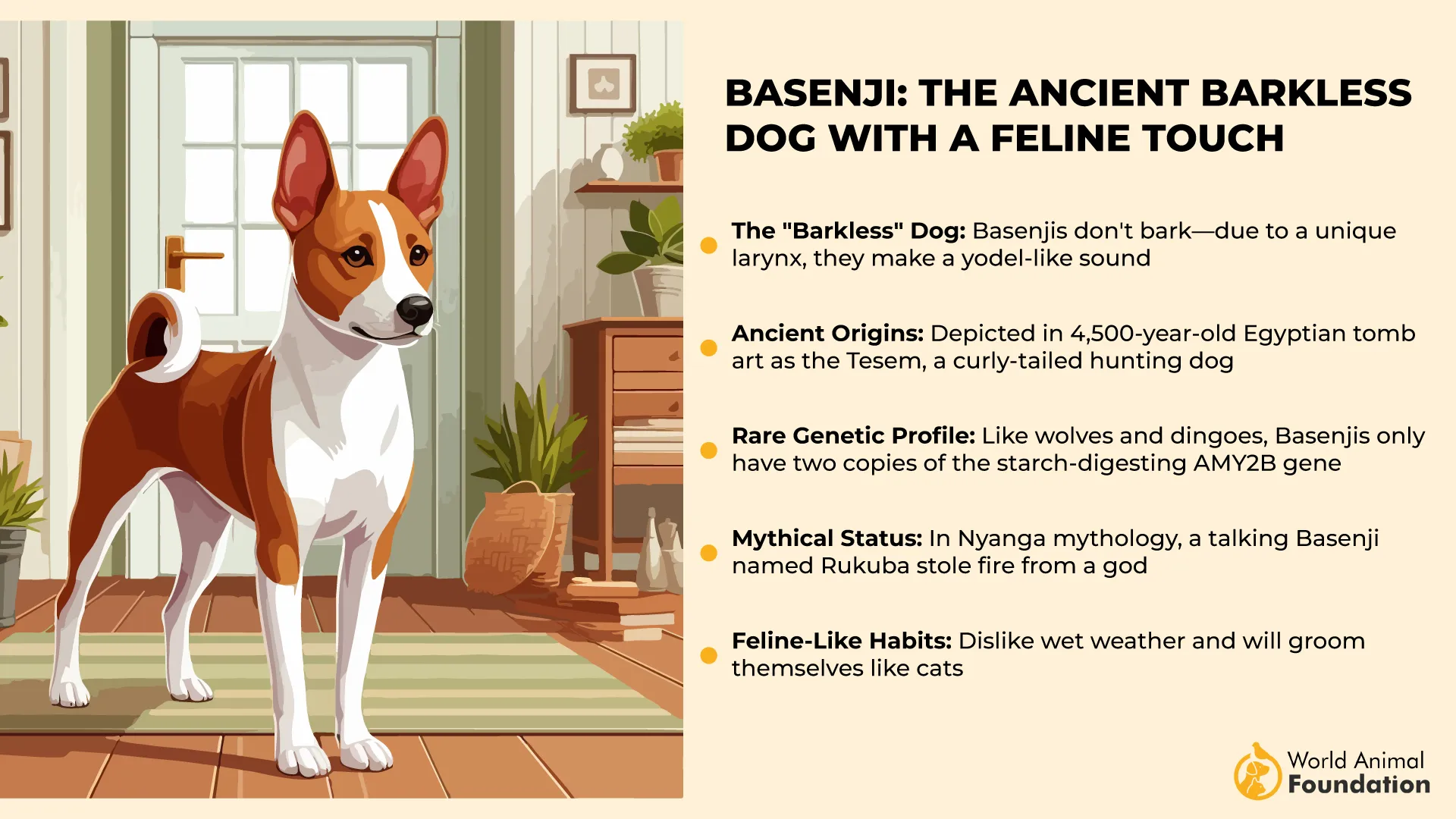
Basenjis are intelligent but notoriously independent. They groom themselves like cats, dislike wet weather, and often resist commands if they’re not in the mood. Socialization and early training are key to managing their strong-willed nature.
PetMD states that these dogs need daily physical and mental activity. Without it, they can become destructive or escape-prone. A secure yard, structured play, and puzzle-based training will help them thrive and keep their mischievous streak in check.
Breed Highlights
Origin: Congo region, ~6000 BCE
Original role: Hunting and vermin control
Distinctive traits: Yodeling vocalization, cat-like grooming, high energy level
3. Alaskan Malamute
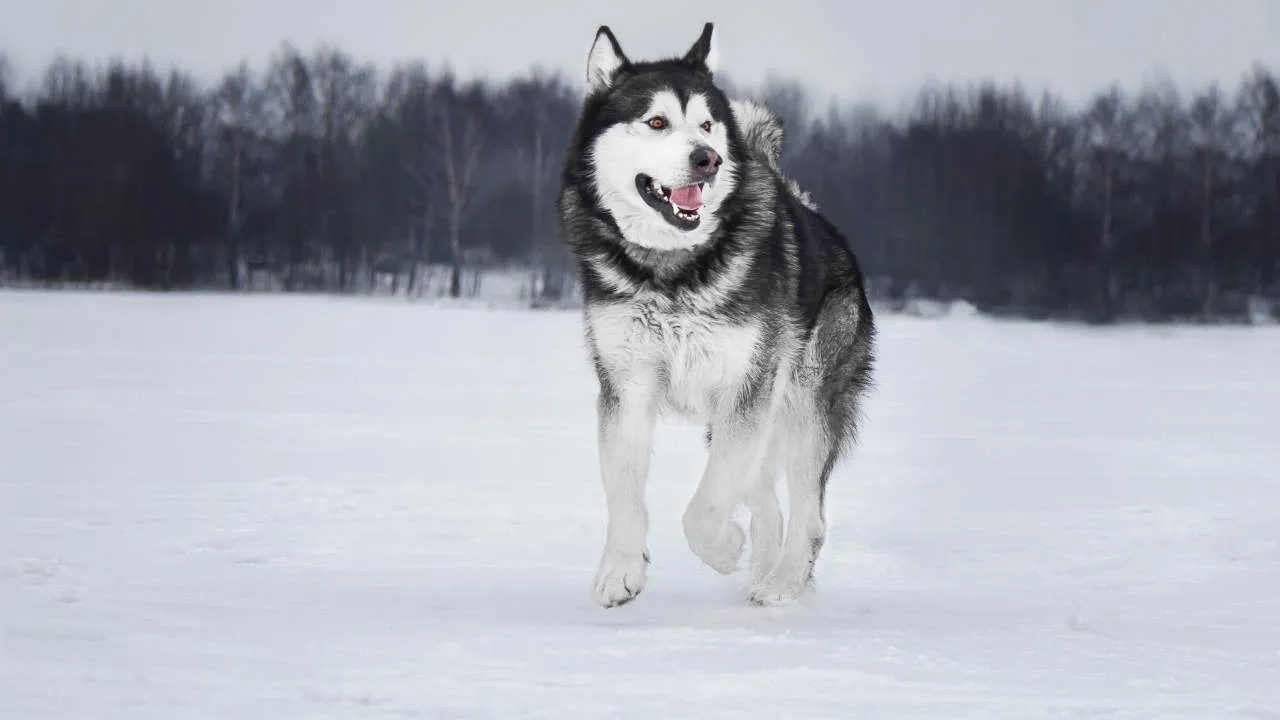
The Alaskan Malamute is among the most ancient Arctic sled dogs, believed to have descended from domesticated wolf-dogs that crossed into North America via the Bering Strait around 4,000 years ago. The breed’s name honors the Mahlemut Inupiat people, who bred these dogs for hauling heavy loads through icy terrain.
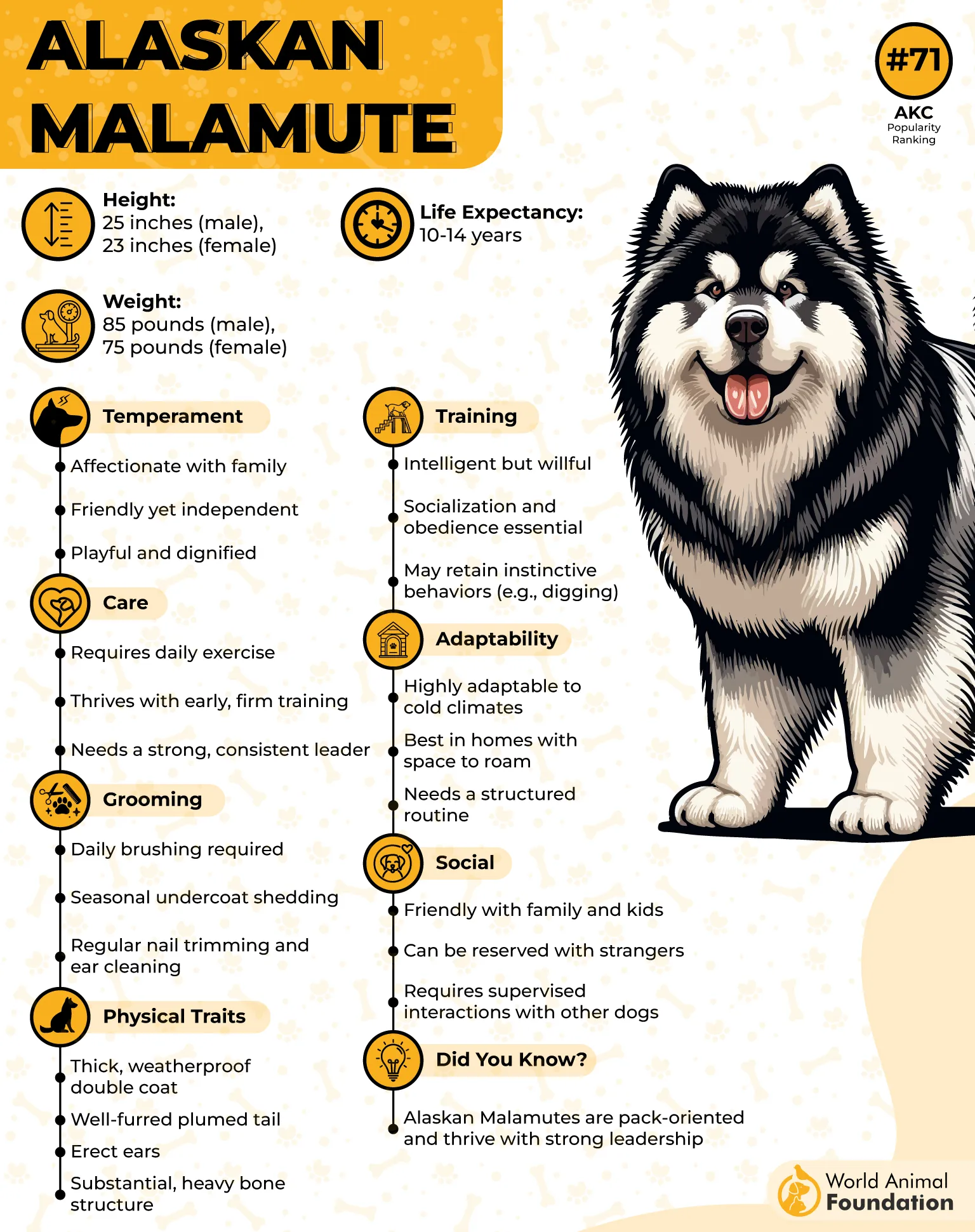
Built for endurance, not speed, Malamutes excelled in hauling freight over long distances. Their dense double coats shielded them from the harsh Alaskan climate, while their immense strength made them invaluable for daily survival. These dogs were often seen working in packs, cooperating to complete grueling tasks.
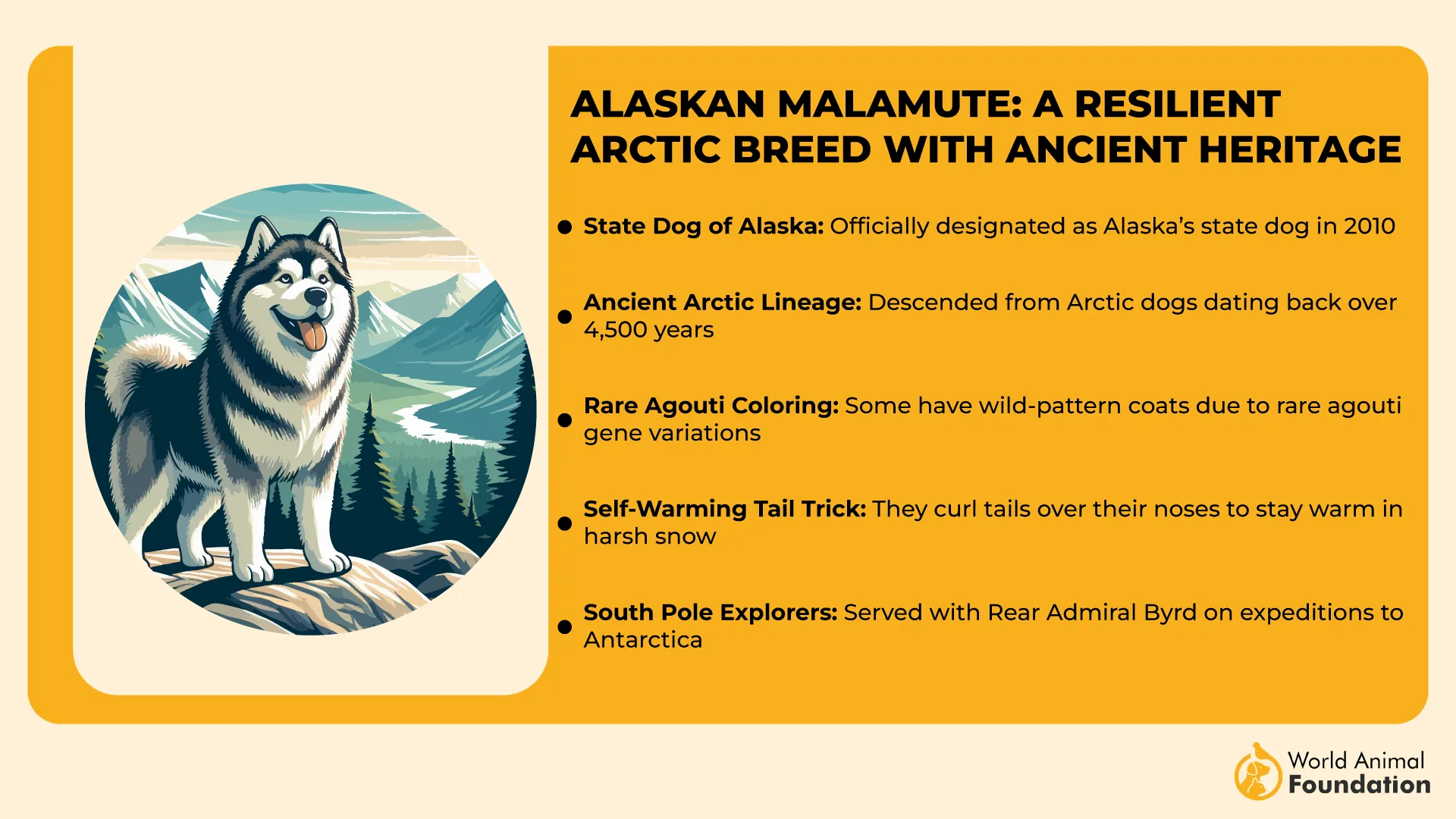
Despite their imposing size and power, Malamutes are affectionate and playful around family. They’re known to be independent thinkers, which can make training a bit of a challenge without consistent leadership. They’re also highly vocal, not in barking, but in their signature “woo-woo” sounds and howls.
This breed thrives with purpose and companionship. Without enough exercise or stimulation, they can become destructive. Malamutes are better suited to experienced owners who can provide both structure and affection in equal measure.
Breed Highlights
Origin: Alaska, ~2000 BCE
Original Role: Sled pulling, hunting
Traits: Hardy, vocal (howlers), high endurance
4. Chow Chow
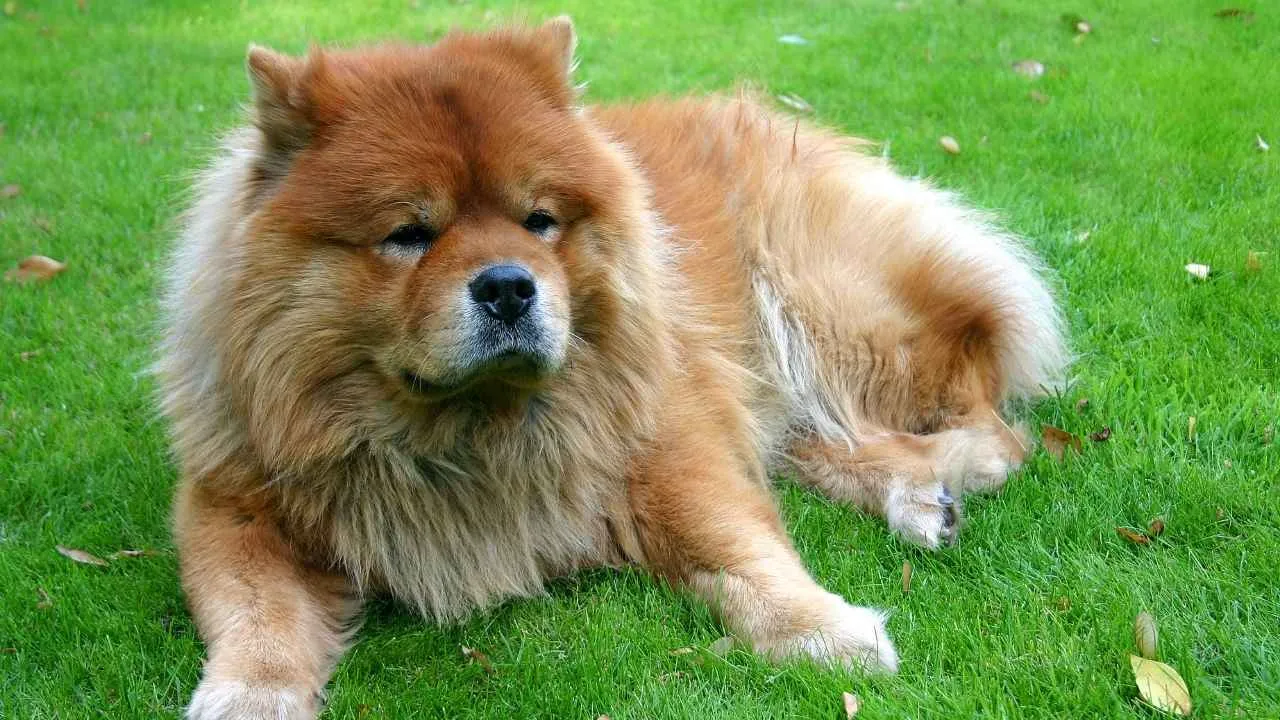
Few breeds display their ancient lineage as visibly as the Chow Chow. With a history that stretches back over 2,000 years to the Han Dynasty of China, Chows served in multiple roles, from temple guardians and hunting dogs to draft animals and even royal companions.
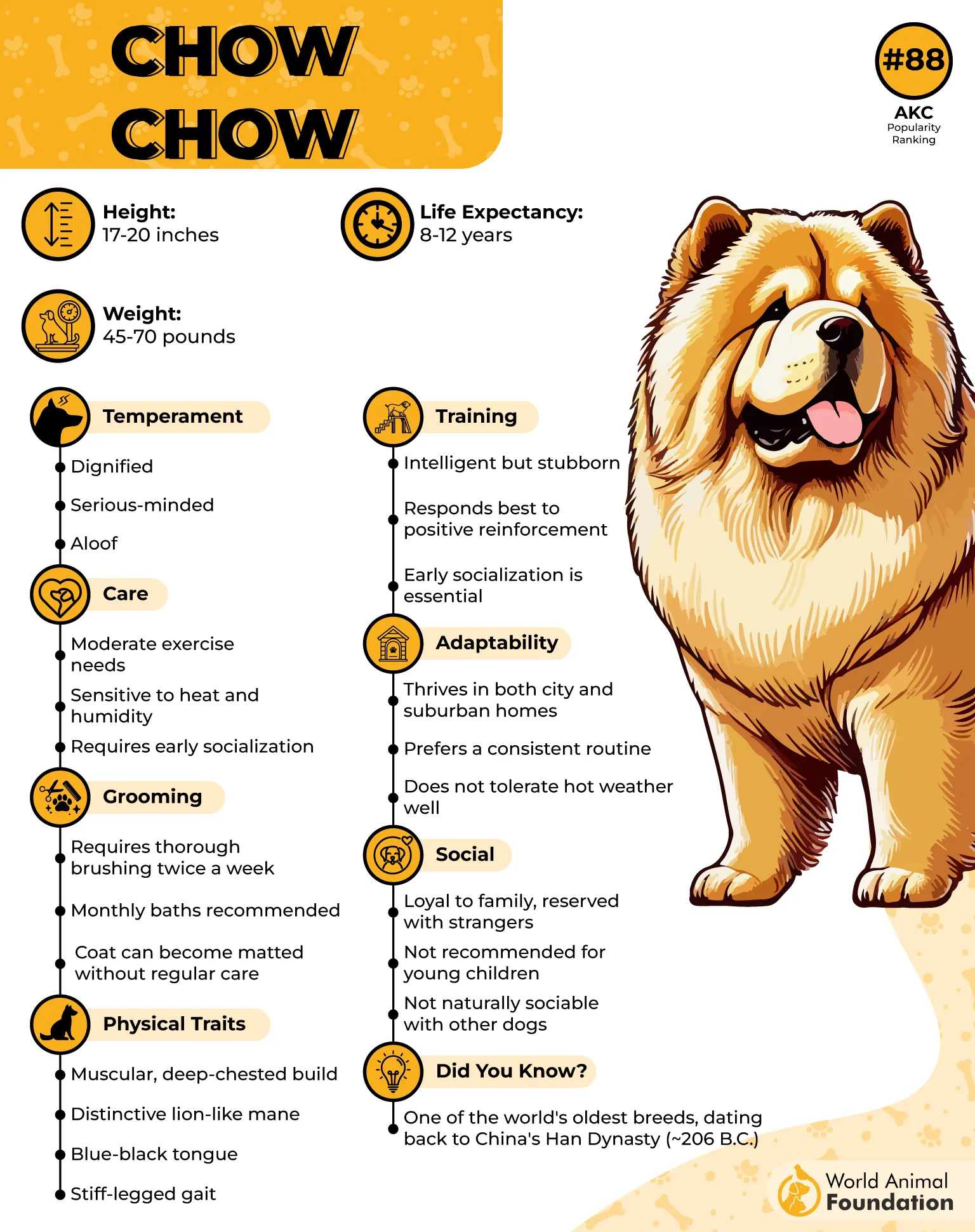
Their appearance alone suggests antiquity: lion-like manes, blue-black tongues, and an aloof dignity unlike most modern breeds. Chows are compact and powerful, with a stiff-legged gait and a naturally regal demeanor. They often chose a single person to bond with, remaining loyal for life.
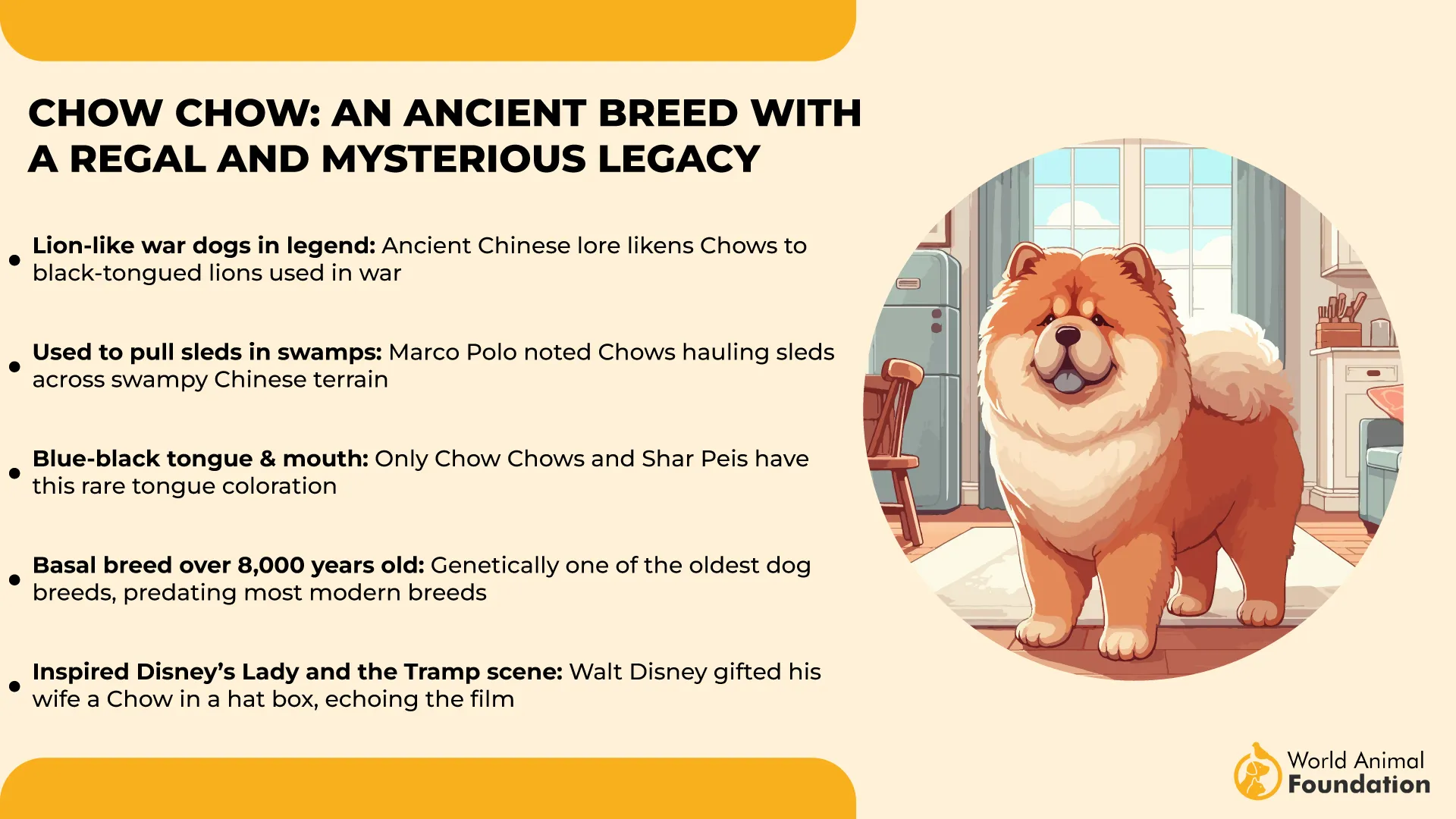
Although they look like living teddy bears, Chow Chows aren’t overly cuddly. They prefer space and quiet consistency. As per Britannica, early socialization is vital, as their guarding instincts can make them wary or even aggressive toward strangers or other dogs without proper exposure.
This breed isn’t a good fit for first-time owners, but those who appreciate independence and calm confidence will find them deeply rewarding. Regular brushing and attention to health, particularly hip and eye issues, are important for long-term well-being.
Breed Highlights
Origin: China, ~200 BCE
Original Role: Guardian, hunter, hauler
Traits: Independent, dignified, distinctive blue-black tongue
5. Afghan Hound
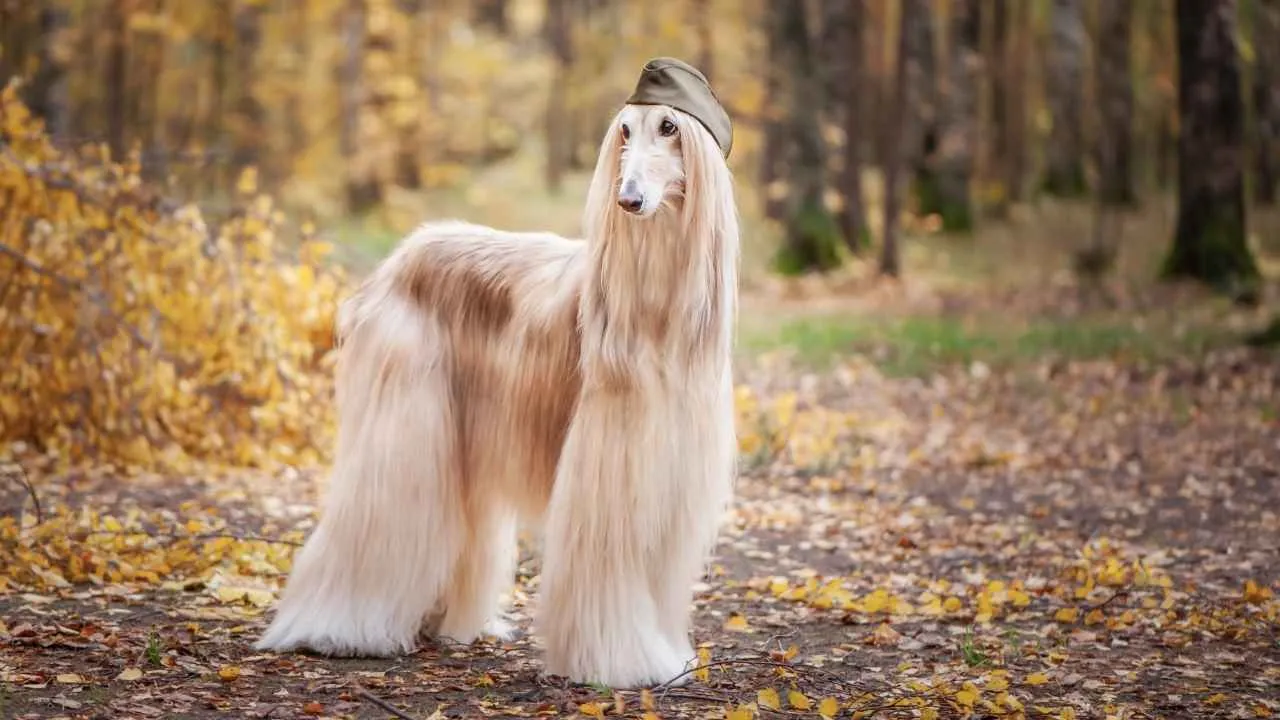
Elegant and ancient, the Afghan Hound traces its roots to the rugged mountains of Afghanistan, where it was bred by nomadic tribes thousands of years ago. These sighthounds were prized for their ability to chase down swift prey like deer and hares across rocky terrain, using speed, agility, and sharp eyesight to their advantage.
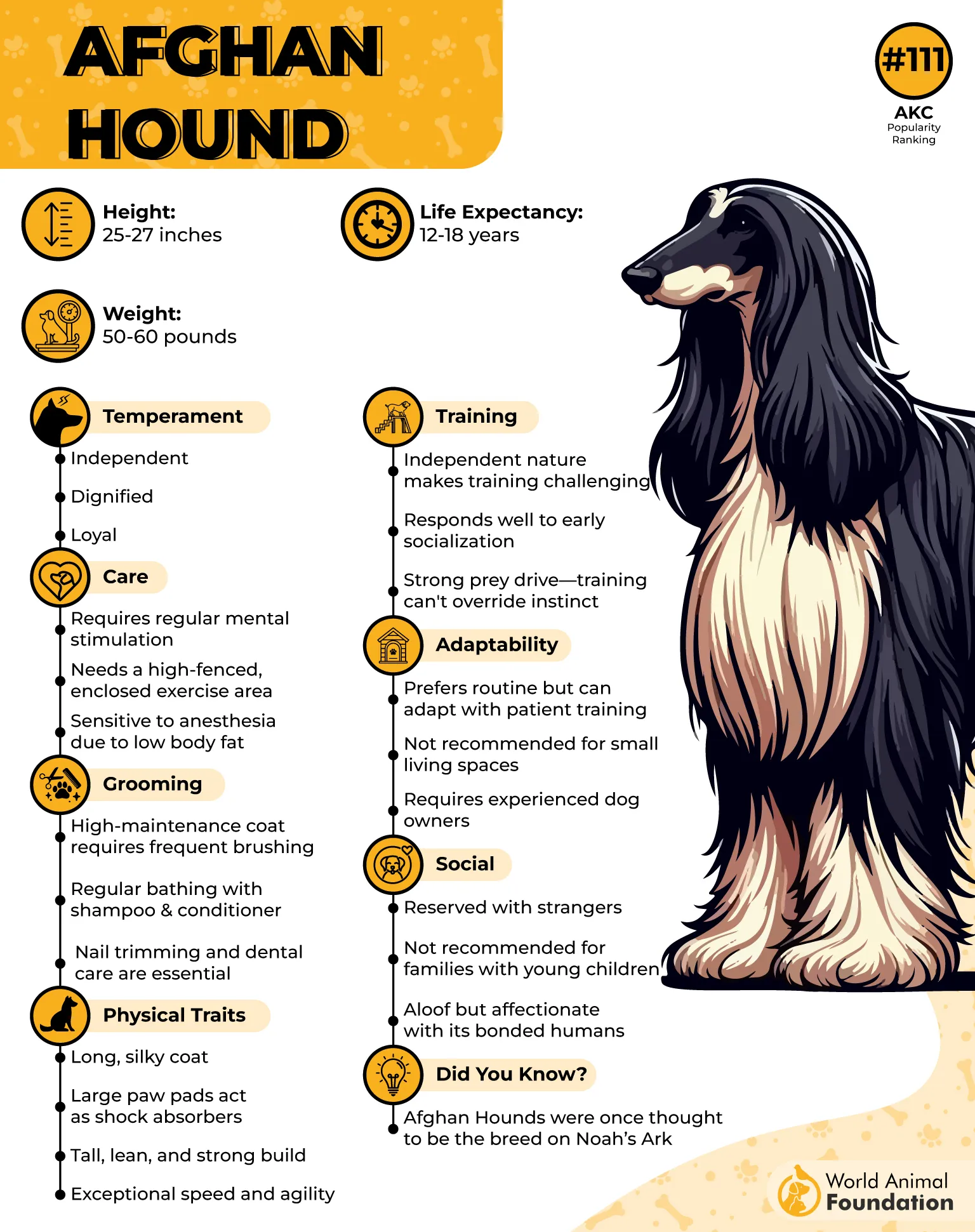
Their long, silky coat served a practical purpose: protection from extreme weather, both cold and dry. Despite their graceful appearance, Afghan Hounds are athletic and built for endurance. They’re also famously aloof, often seeming uninterested in strangers or commands, though this is more about independence than disobedience.
While they bond closely with their humans, Afghan Hounds don’t typically crave constant affection. They can be clownish and sweet at home but prefer to interact on their own terms. This trait makes them charming, but they require a patient owner who respects their space and lets trust grow naturally.
Regular grooming is a must for their flowing coats, and exercise is equally important to keep them both fit and happy. Secure yards are essential; these dogs can bolt after anything that moves. With proper care, the Afghan Hound remains as stunning and self-assured as it was centuries ago.
Breed Highlights
Origin: Afghanistan, ancient times
Original Role: Hunting game in mountainous terrain
Traits: Aloof yet affectionate, fast, high-maintenance coat
6. Samoyed
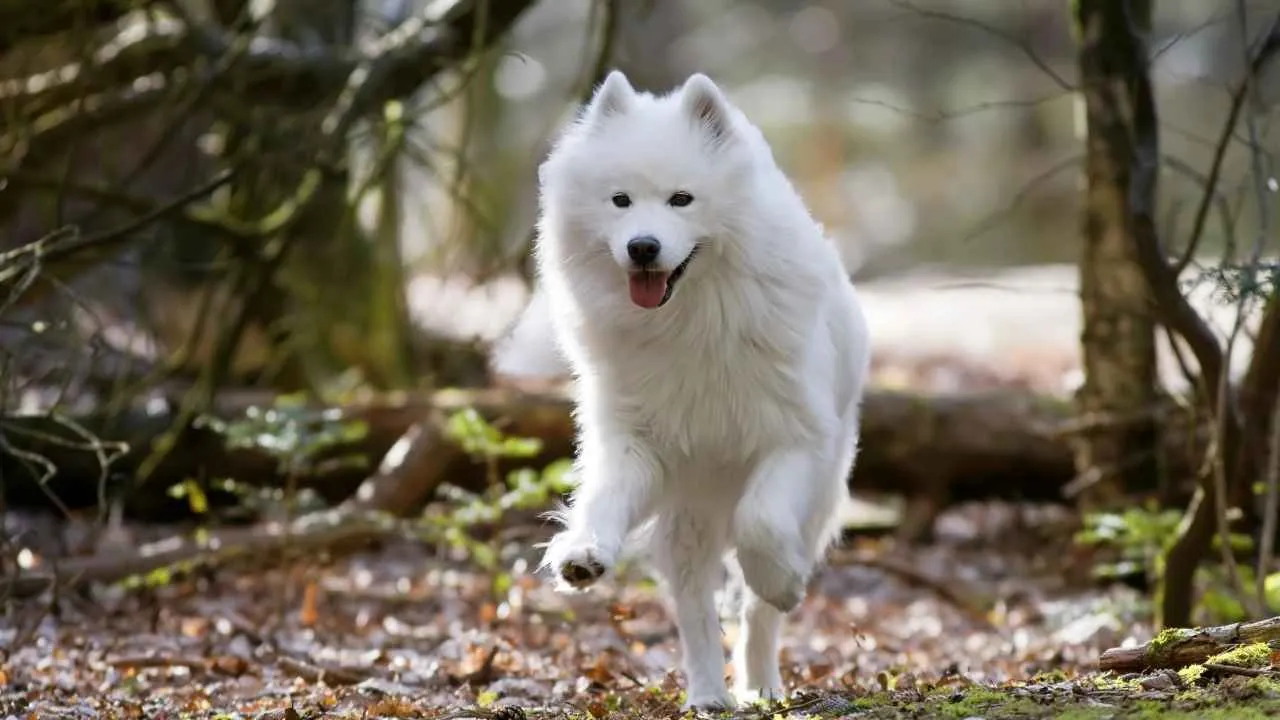
With its iconic smile and fluffy white coat, the Samoyed is as friendly as it looks. This ancient Arctic breed hails from the Siberian tundra, where it was developed by the nomadic Samoyedic peoples to herd reindeer, pull sleds, and keep their families warm in the bitter cold. These dogs lived closely with humans, often sleeping beside them in tents for warmth.
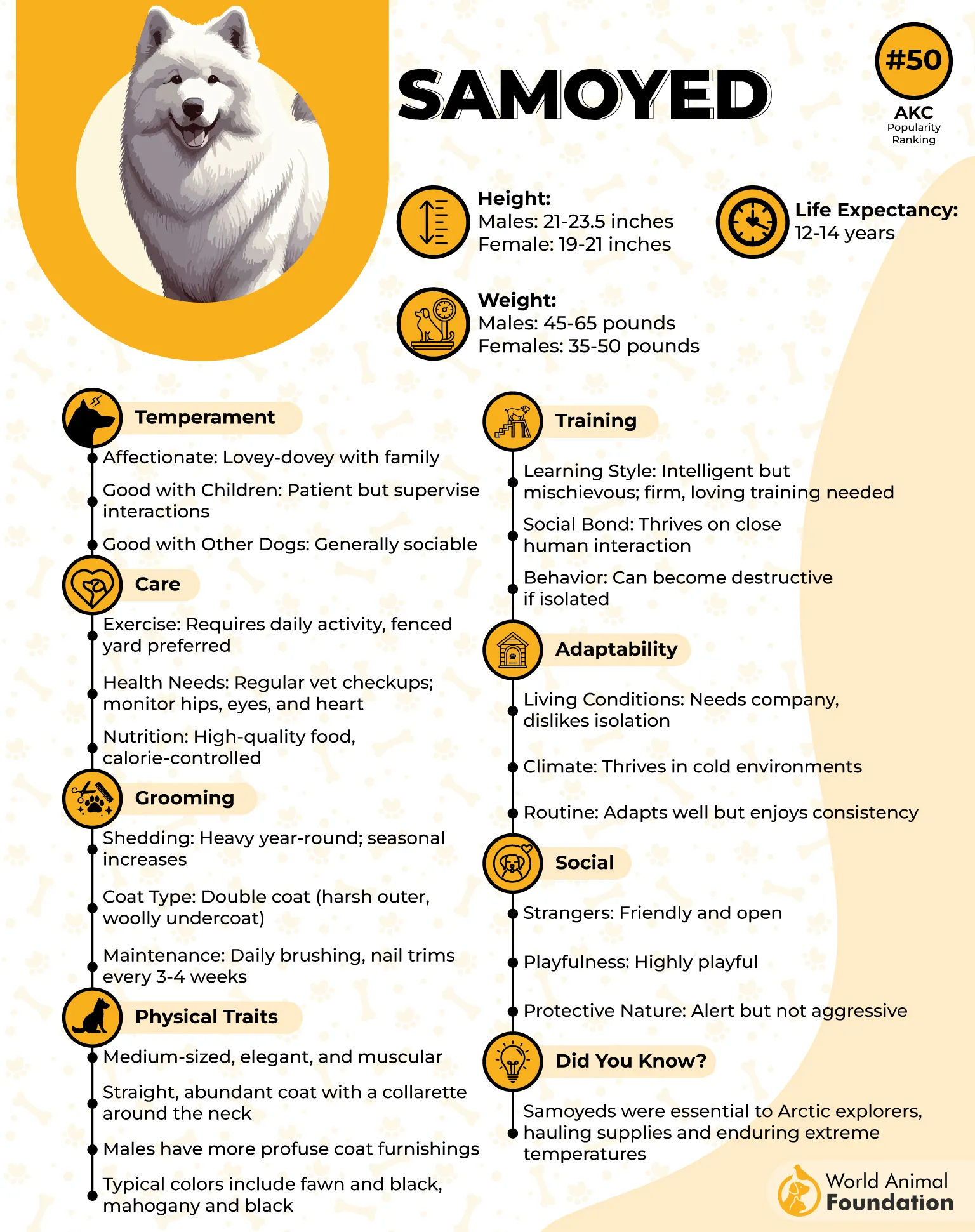
The breed was introduced to the West in the late 1800s, when explorers and breeders brought the first Samoyeds to England. Early dogs like “Sabarka” and “Whitey Petchora” became the foundation for modern lines. Since then, Samoyeds have become beloved worldwide, not only for their looks but also for their loyalty, intelligence, and work ethic.
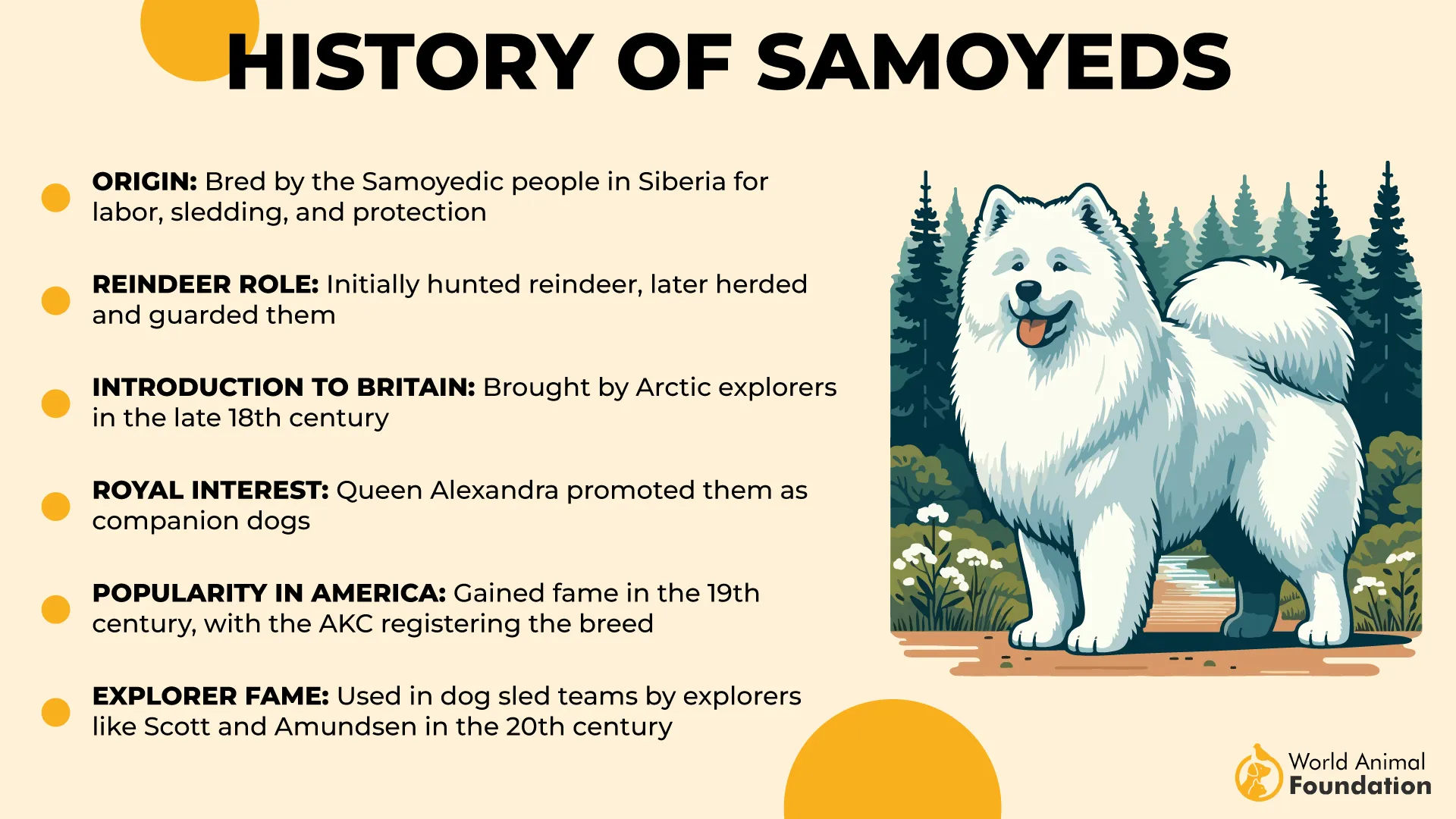
Despite their fluffy appearance, Samoyeds are not just couch potatoes. They are active, clever, and thrive when given a job to do. They’re known for being talkative and expressive, often using their voice to “chat” with their humans. They need daily exercise, companionship, and mental stimulation to stay happy and well-behaved.
Their thick double coat does require regular brushing, especially during seasonal shedding. But those who love the Samoyed say the extra grooming is worth it. These dogs bring warmth, charm, and centuries of history into any home lucky enough to have one.
Breed Highlights
Origin: Siberia, ancient Arctic tribes
Original Role: Sled pulling, herding, keeping humans warm
Traits: Social, intelligent, high-maintenance coat, famously “smiley”
7. Pharaoh Hound
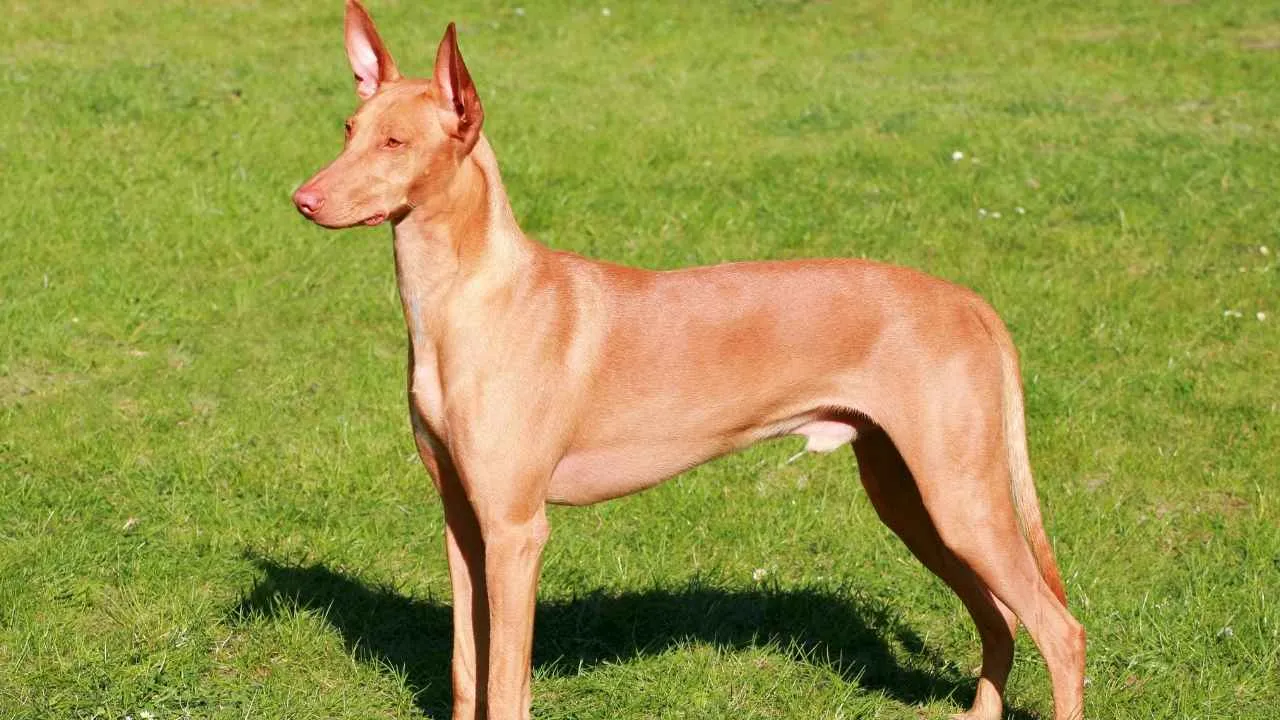
The Pharaoh Hound is a sleek, graceful breed that carries an air of royalty. While long believed to have originated in ancient Egypt, modern research shows this breed likely developed in Malta, where it remained virtually unchanged for centuries. Its real name, Kelb tal-Fenek, means “rabbit dog,” a nod to its historic role in hunting.
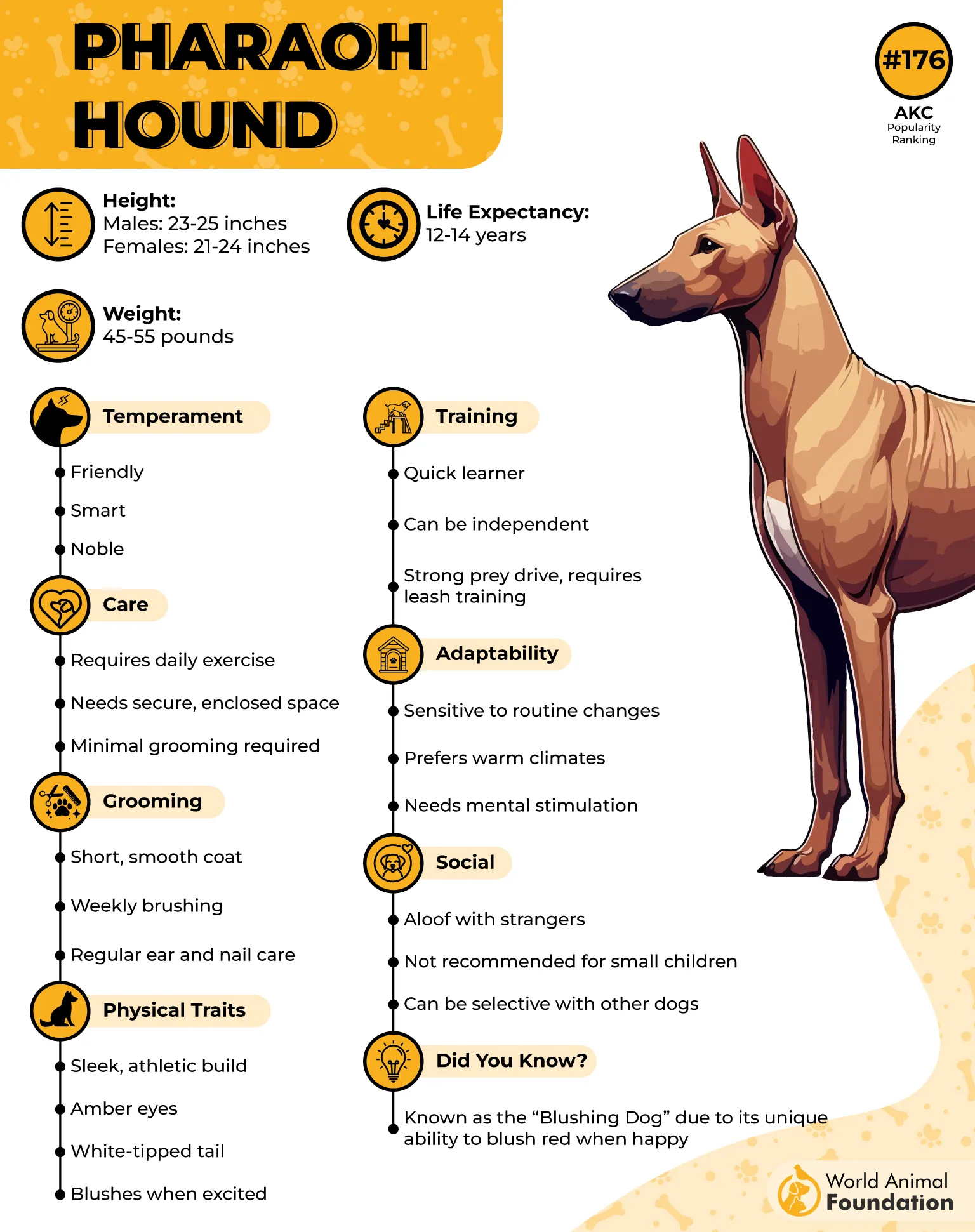
These dogs are known for their remarkable athleticism and unique traits. They can blush, a pink flush appears on their ears and nose when they’re excited, and they often greet their humans with a toothy grin. Agile and fast, Pharaoh Hounds are built for chasing prey, but at home, they’re affectionate and calm.
Pharaoh Hounds are independent but enjoy the company of family, including children and other pets. They are intelligent and respond well to positive reinforcement, though their strong prey drive means they should be kept on a leash or in a secure area when outdoors. Regular walks or sprints are essential to satisfy their energy levels.
Grooming is simple, thanks to their short, glossy coats. These dogs shed lightly and don’t have a strong odor. With their regal stance, expressive eyes, and friendly demeanor, Pharaoh Hounds are a unique combination of history, beauty, and heart.
Breed Highlights
Origin: Malta (ancient ties to Egypt)
Original Role: Rabbit hunting, coursing
Traits: Athletic, affectionate, independent, known to blush and smile
Conclusion
Dogs have journeyed alongside humans for thousands of years, evolving from wild canines to beloved companions through the process of domestication and selective breeding. Whether originally bred to hunt small game, pull sleds through cold climates, or guard sheep, these four-legged friends have served many roles across cultures and continents.
From the compact lapdogs once treasured as noble gifts in ancient China to the sleek and athletic hunters of the Mediterranean, every breed carries a unique legacy. Their physical traits, thick fur for arctic survival or a slender frame for chasing prey, speak to the tasks they were bred to perform.
Today, dogs are more than working animals. They are family pets, loyal protectors, and living pieces of history. Each pup brings not just companionship but also a glimpse into the past, into how humans shaped breeds to survive, serve, and thrive.
Whether you’re drawn to popular breeds or rare ancient lines, dogs remain an enduring part of our world, symbols of resilience, loyalty, and love.


